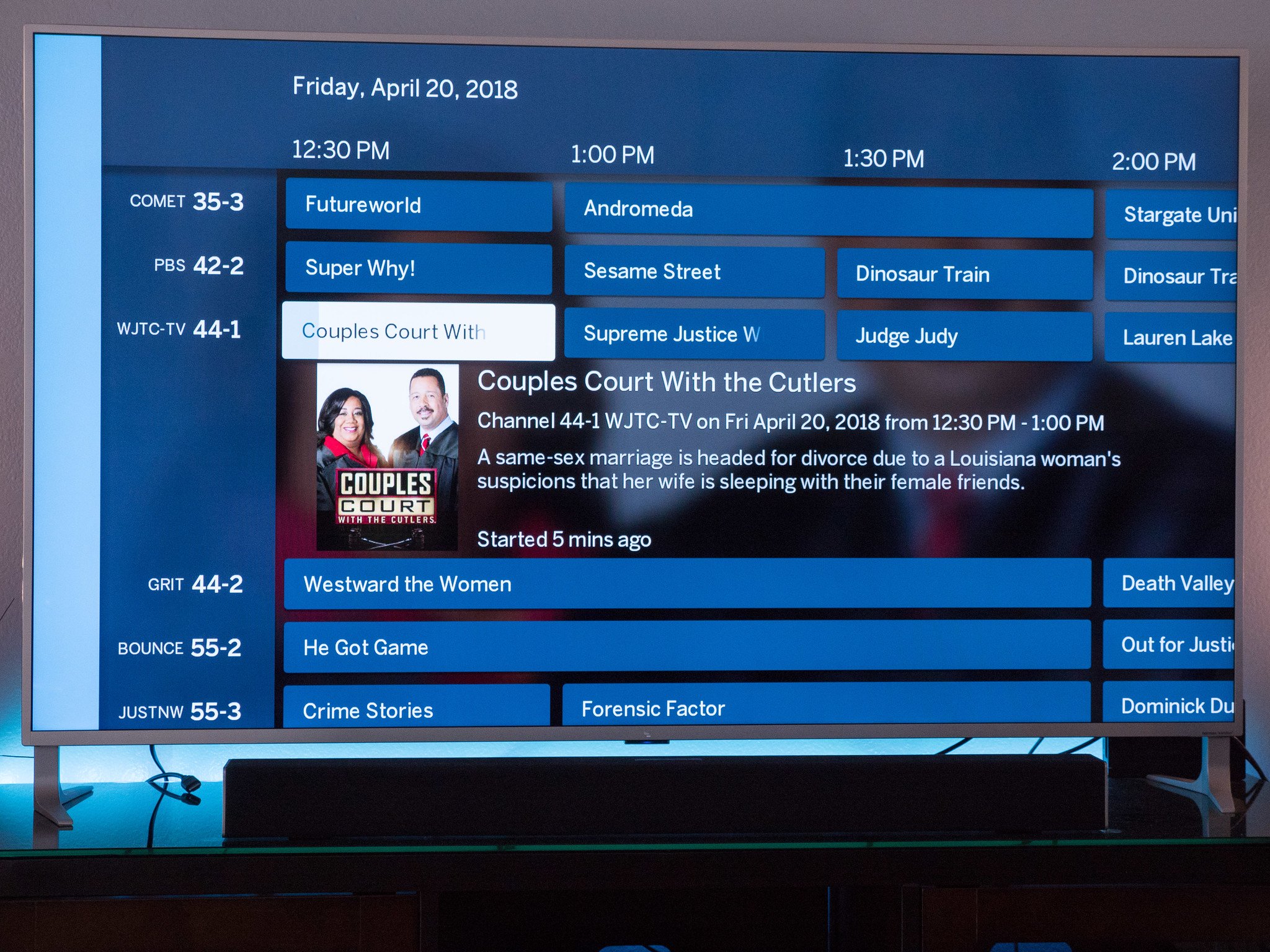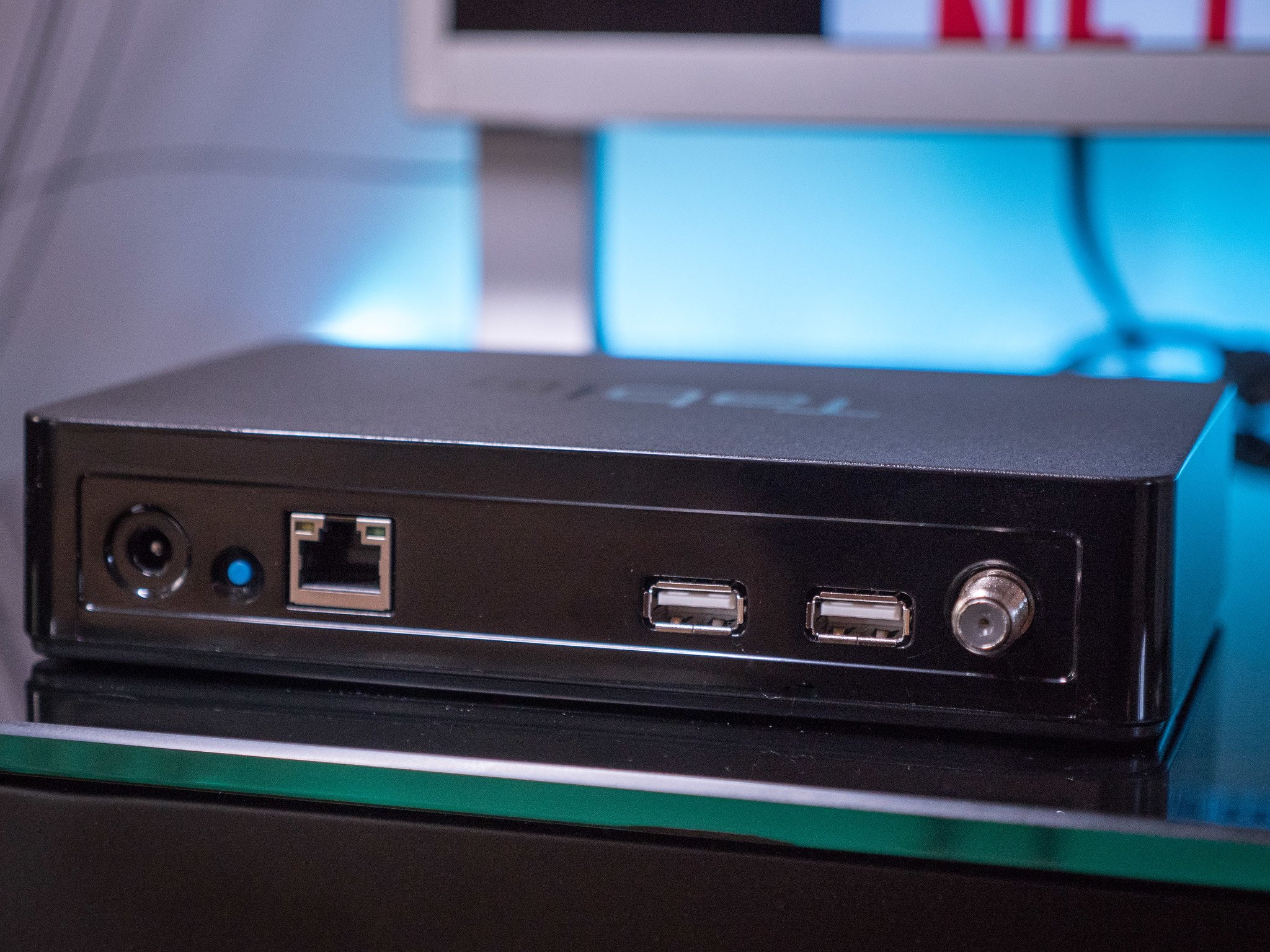
Streaming TV is great. But it can still leave holes in your entertainment scheme. That's where over-the-air antennas — and the free TV that comes with them — come in.
Plugging an antenna straight into a TV is fine. It works. One that one TV. And you pretty much can forget about recording anything with that setup.
What's better? Running an antenna into an OTA tuner box like Sling, AirTV — or Tablo. Each has its merits. Here we're going to focus on Tablo.
What is Tablo?
Tablo is an external tuner box with DVR capability that also takes the over-the-air broadcast and lets you watch it on all kinds of devices in your home. You plug in an antenna, hook it up to your network, and Wifi takes care of the rest.
There are a few different models at a few different price points. And it's a good bit more expensive than other OTA boxes out there. But the real selling feature of Tablo is that it's dirt simple for recording that free over-the air content.
So let's revise that previous statement: You plug in an antenna, and plug in a external hard drive. (More on that in a second.) Then hook it up to your network. And now you can easily watch and record free over-the-air TV throughout your home.
Which devices? Tablo works on Android phones and tablets, iPhone and iPad, Apple TV, Android TV, Amazon Fire TV, Roku, Xbox One, Samsung Smart TVs, NVIDIA Shield TV, LG TVs with webOS — and there's a web interface, too, so you can watch through your computer.
The latest updates, reviews and unmissable series to watch and more!
Which Tablo should you get?
Here's where things get a little interesting. There currently are four models of Tablo. Three boxes, and one USB dongle thing that's made for a specific use case.
Note: Prices may vary, because Amazon likes to change things up.
- Tablo Dual Lite ($139): This is the basic model. It's got two tuners, so you can watch two shows on two devices at the same time. You'll need to provide your own external hard drive (up to 8TB) for recording shows. ( See at Amazon
- Tablo Dual 64GB ($179): This is basically the Dual Lite box, but with a 64GB hard drive built in. Here's the thing though: That's an $40 premium over the box in which you bring your own drive. You can add at least 1 terabyte of external storage for that money instead — if not more. (See at Amazon)
- Tablo 4-Tuner ($299): This is exactly what you think. The same Tablo experience — external hard drive required — with four tuners built in, so you can watch (and record) simultaneously on twice as many devices. ( See at Amazon)
- Tablo DVR Engine for NVIDIA Shield TV ($69): As the name implies, this one is a USB TV tanner that plugs in to an NVIDIA Shield TV. (Which is the only Android TV box we currently recommend, by the way.) You'll use it in conjunction with a app specifically for Shield TV. You'll still need an external hard drive, also plugged into the Shield TV. ( See at Amazon)

The Tablo guide subscription
In addition to the added expense of an external hard drive (if you don't already have one to use), Tablo also has a subscription fee for an expanded online guide. It's $4.99 a month, $49.99 a year, or $149.99 lifetime. (Add $1, $10 and $30 respectively if you're in Canada.)
You don't have to order the guide subscription. Tablo still works fine with without it. But you'll get a number of extra features, including 14 days of guide data (instead of 24 hours). You'll also get dedicated views for movies and sports, along with other filters. And you'll get additional information on series (as well as the ability to record by series. And you'll be able to use "Tablo Connect," which lets you stream live and recorded video from outside your home. (Think Plex.)
What's good about Tablo?
While it seems like there's a lot going on with Tablo, it's important to stress just how easy it is to use. To put it simply — it's the easiest thing product I've used for recording over-the-air TV. Yeah, it costs a little more than other OTA tuner boxes. But they're not as easy to use (not by a long shot) when it comes to recording that OTA content. Period.
The Tablo apps for mobile — as well as the online interface if you're streaming through a browser — are very well done. Setup is simple, and they're easy to use. And adding the guide subscription is quick and easy, too. (If you're going to use the DVR functionality, I'd go ahead and pony up for this.
In short, it's a well-done, simple product.

What's not so good about Tablo?
One thing we haven't touched on yet gets a little technical. Tablo has some additional hardware inside that "transcodes" the video stream from MPEG-2 to H.264. If you're not up on your video codecs (and we don't blame you at all if that isn't the sort of thing you think of on a regular basis), that means the video stream is converted from one format to another.
The idea behind this is twofold, in this case: Tablo transcodes the video so that it takes up less room on the hard drive when you're recording, and so that it requires less bandwidth when you're streaming the video to various devices in your home.
Transcoding in and of itself is not a bad thing. But the downsides to this? First is that there's a noticeable lag time when you change to a different and it starts the transcoding process. We're talking 10 or 15 seconds or so. If you're an impatient channel flipper (ahem), you'll absolutely notice this.
The other thing is that video quality can definitely suffer a bit, even though H.264 is supposed to help with that. It'll depend on your network and what devices you're streaming to — there can be a lot of variables here. Just be prepared, is all we're saying.
More: Routers 101 — what you need to know for streaming
